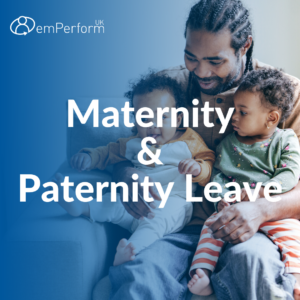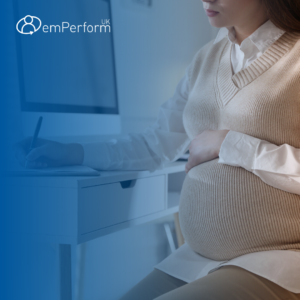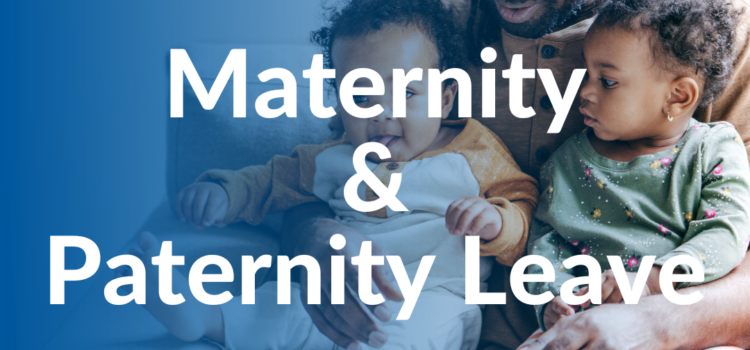
Welcoming a new child into the family is an exciting time, but it also comes with many questions about your rights and entitlements regarding maternity and paternity leave. This guide aims to provide clarity on the most frequently asked questions about maternity, paternity and adoption leave, helping you navigate this journey with confidence and ease. Whether you are a mother, father, or partner, this resource will help you understand what to expect and how to make the most of your parental leave.
What is Maternity and Paternity Leave?
Maternity and paternity leave are types of parental leave designed to allow employees time off work to care for their new child. Maternity leave is typically taken by birth mothers, while paternity leave is available to fathers or partners.
How Much Maternity and Paternity Leave are Employees Entitled to?
The duration and conditions of maternity and paternity leave vary significantly across countries. For instance, Ben’s Benefits Benchmarking found that Sweden offers one of the most generous parental leave policies globally, with approximately 480 days (16 months) of statutory leave per child. This allowance is encouraged to be shared between both parents, with a minimum of 90 days reserved exclusively for each parent. During this period, parents receive parental leave pay amounting to around 80% of their salary for the first 390 days, followed by a reduced amount for the remaining 90 days.
In the UK, maternity and paternity leave policies aim to support parents during the crucial early stages of parenthood. Maternity leave typically lasts for up to 52 weeks, with eligible employees entitled to 39 weeks of statutory maternity pay (SMP). During the first six weeks of SMP, mothers receive 90% of their average weekly earnings, followed by a flat rate for the remaining 33 weeks. Additionally, mothers have the option to extend their leave beyond 52 weeks, although this may be unpaid. On the other hand, paternity leave in the UK allows eligible fathers, partners, or adopting parents to take up to two weeks off, during which they receive statutory paternity pay (SPP) or 90% of their average weekly earnings, whichever is lower.

What is the Rate of Pay for Maternity and Paternity Leave?
Understanding the rate of pay for maternity and paternity leave is essential for planning and ensuring financial stability during this significant period. A survey by Ben’s Benefits Benchmarking revealed that 32% of companies offer only statutory maternity leave, while 68% provide at least two weeks of fully paid maternity leave benefits.
Maternity Pay:
The amount of maternity pay can vary significantly, ranging from full pay, where employers provide their employees with their regular salary during maternity leave, to statutory pay, which is often provided by governments and may be a percentage of the employee’s salary or a fixed amount. For example, in the UK, statutory maternity pay is 90% of the employee’s average weekly earnings for the first six weeks, followed by a fixed weekly amount or 90% of average weekly earnings (whichever is lower) for the next 33 weeks. The specific terms of maternity pay depend on the policies of your employer and the regulations of your country.
Paternity Pay:
Similar to maternity pay, the amount of paternity pay can vary. It is typically offered at a set rate or as a percentage of the regular salary during the paternity leave period. The availability and terms of paternity pay depend on the policies of your employer and the regulations governing parental leave in your country. Eligible fathers, partners, or adopting parents are entitled to receive either statutory paternity pay (SPP) or 90% of their average weekly earnings (whichever is lower) during this period. Statutory paternity pay is paid at a set weekly rate, which is determined by the government each tax year. For the most current rates, individuals should check with their employer or the UK government’s official resources.
What is Shared Parental Leave?
Shared Parental Leave (SPL) is a flexible leave option that allows parents to share the responsibility of caring for their child during the early months of their life. This policy enables eligible parents to split the total leave entitlement between them, giving them the flexibility to decide how to manage childcare responsibilities based on their individual circumstances and preferences.
Adoption Leave and Pay
Adoption leave and pay in the UK provide essential support for individuals and couples welcoming an adopted child into their family. Eligible employees can take up to 52 weeks of adoption leave, split into 26 weeks of Ordinary Adoption Leave and 26 weeks of Additional Adoption Leave. Statutory Adoption Pay (SAP) is available for up to 39 weeks, offering 90% of average weekly earnings for the first 6 weeks, followed by a standard rate. This ensures adoptive parents have the time and financial stability to bond with their new child. To qualify for adoption leave, one must be legally classified as an employee, give proper notice to their employer, and provide proof of adoption if requested. Adoption leave is not available for private adoptions without agency involvement, such as adopting a relative or stepchild. For SAP eligibility, continuous employment for at least 26 weeks and earnings of at least £123 per week are required. When adopting, partners can choose between adoption and paternity leave, provided they meet the qualifying conditions. Shared parental leave is also an option if both partners qualify, allowing flexibility if the adopter returns to work early. This supportive framework promotes family welfare and child development in the UK.

When does the Employer need to be notified?
It’s crucial to inform your employer as soon as possible once you are aware of your pregnancy or have finalised adoption plans. Notifying your employer promptly allows them to make necessary arrangements, such as arranging coverage for your role during your absence and ensures that you receive the appropriate maternity or paternity leave entitlements according to company policies and legal requirements. If you’re planning to take adoption leave, you must notify your employer within 7 days of being matched with a child for adoption or as soon as possible thereafter.
As an employer, demonstrate your commitment to the health and wellbeing of your employees during this exciting time by encouraging them to provide ongoing feedback on your maternity and paternity policies. This shows that you value their input and are dedicated to supporting them through these significant life events.
How do I calculate maternity and paternity leave with bank holidays in it?
Calculating maternity and paternity leave involves considering any bank holidays that occur during the leave period, as these holidays may affect the total duration of leave you are entitled to. Typically, paternity leave entitlements are stated in terms of weeks or days. Your HR department or the relevant government agency can provide specific guidance on how bank holidays impact your paternity leave entitlement and help you calculate the precise duration of your leave.
Understanding these aspects of maternity and paternity leave, including notification requirements, shared parental leave options, and leave entitlement calculations, empowers parents to effectively plan for and navigate their leave periods while ensuring they receive the support and benefits, they are entitled.

Common Concerns for Maternity and Paternity Leave
Is There Unpaid Maternity and Paternity Leave?
In some countries, maternity and paternity leave may be unpaid or only partially paid, which can pose challenges for families managing household expenses during the leave period. It’s important for expecting parents to research their entitlements and explore options for financial support during unpaid periods, such as savings, government benefits, or employer-provided supplemental income.
Does Your Employer Have to Hold Your Job?
The issue of job security during maternity and paternity leave is a significant concern for many employees. While laws in various countries provide protection for job positions during leave, the specifics can vary widely. It is essential for employees to clarify with their employer or HR department whether their job will be held open for them or if they will be guaranteed a similar position upon their return. This reassurance allows parents to focus on their family responsibilities without the added stress of worrying about job insecurity. As an employer, prioritising support for your employees during this period is crucial not only to reduce attrition rates but also to foster a positive workplace environment. Utilising tools like 360 degree feedback and performance reviews can facilitate open and constructive conversations with employees about their concerns and needs during maternity or paternity leave. These practices help strengthen employee loyalty and contribute to a supportive organisational culture.
Availability of Flexible Work Arrangements Upon Return
Upon returning to work following maternity or paternity leave, many parents seek flexible work arrangements to better accommodate their new family responsibilities. These arrangements, which may include part-time schedules, flexible commuting options, or job sharing opportunities, are often crucial for parents balancing work and home life. Employers who prioritise and support these flexible arrangements not only assist in easing the transition back to work but also contribute to maintaining a healthy work life balance for their employees. Introducing hybrid working options can be particularly beneficial in this regard. For insights on managing hybrid working effectively, you can explore emPerform’s blog on the topic.
Access to Childcare Facilities and Support
Finding suitable childcare is a critical concern for many parents returning to work after maternity or paternity leave. Access to affordable and high-quality childcare facilities, as well as support in balancing childcare responsibilities with work commitments, can significantly impact a parent’s ability to successfully reintegrate into the workforce. Employers who offer childcare assistance programs or resources for locating childcare services can alleviate this concern for their employees.
Emotional and Psychological Support
Navigating parenthood, especially in its preliminary stages, can present significant emotional and psychological challenges. Managing stress, and fatigue, and ensuring the wellbeing of both parents and their newborn are common concerns. Employers can play a crucial role in supporting their employees during this transitional period by offering access to counselling services, parental support groups, or employee assistance programs. These resources are instrumental in addressing mental health and emotional wellbeing issues that may arise. Implementing anonymous surveys can also be an effective way to engage employees and gather insights into their feelings and specific support needs. This approach not only demonstrates a commitment to employee wellbeing but also fosters a supportive workplace environment where parents feel understood and supported in managing their personal and professional responsibilities.
Advocating for Family Friendly Workplace Policies
Understanding and advocating for adequate maternity and paternity leave policies is crucial in promoting family friendly workplaces. Ensuring that all parents have the opportunity to participate fully in the initial stages of their child’s development benefits not only families but also employers and society at large. According to Gallup, fostering an inclusive work culture that embraces and supports mothers in particular is vital. Such a culture provides the necessary resources for mothers to return to work with confidence, purpose, and even enthusiasm. Companies that prioritise generous parental leave policies often see increased employee satisfaction, retention, and productivity. By supporting both mothers and fathers, organisations can create a more inclusive and equitable work environment, leading to stronger, more resilient families and communities.
In conclusion, navigating maternity and paternity leave involves understanding a range of policies and considerations that vary by country and employer. From entitlements and rates of pay to job security, flexible work arrangements, and emotional support, these aspects play crucial roles in supporting new parents during this transformative time. Employers who prioritise family friendly policies and provide comprehensive support not only create a positive workplace culture but also contribute to employee wellbeing, satisfaction, and retention. By advocating for inclusive policies organisations can help ensure a smooth transition back to work and promote a balanced approach to both professional and personal life. Understanding these dynamics empowers both employers and employees to navigate maternity and paternity leave with confidence and preparedness, ultimately benefiting families, businesses, and society as a whole.
Consider emPerform to further enhance this support by offering insights into managing hybrid working arrangements effectively, facilitating ongoing feedback through 360 degree reviews, and ensuring that employees feel valued and supported throughout their parental leave and beyond.
Book a FREE demo today or contact us for any advice on performance management.
